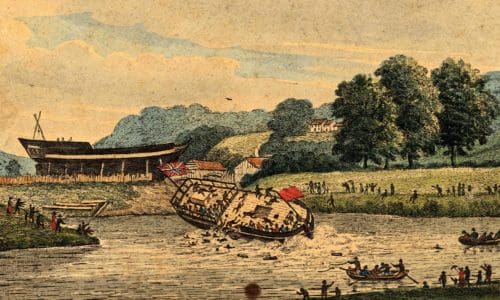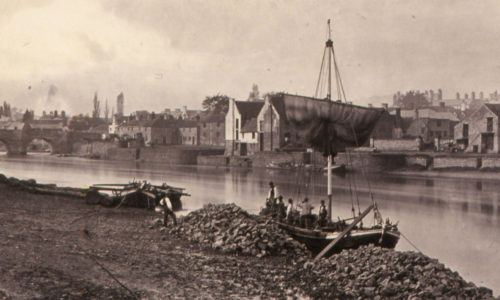For an inland town, some truly massive sea-going ships were built at Monmouth in the 19th century. A terrible tragedy struck in 1825 when the 210 ton Monmouth was launched. She lurched sideways throwing people into the water, including two young boys who were drowned. The Monmouth was built for merchants in Bristol, voyaging to the West Indies in the 1830s and 40s, but she was lost off the coast of Cuba in 1852. In these paintings you can see another massive ship under construction on the right bank. This was probably the 386 ton Bolivar, or the 209 ton Agincourt, which were built at this time. This area of boat building was called ‘The Gamblings’ and is now Monmouth Boys’ School playing fields. They had to wait for flood water and high tides to navigate these huge vessels downstream over the weirs and shallows before reaching the open water of the Severn.


Monmouth had a long tradition of boatbuilding, especially Wye trows, the workhorse of the Wye. These simple cargo boats, with an open hull, were well adapted to the shallow waters of the river. They had a single square sail which could be used when winds were favourable and a mast which could be lowered to pass under bridges. With its flat bottom, a trow could sit on the mud-flats and riverbanks to be loaded and unloaded regardless of the amount of water in the river. They were also well adapted to crossing the open waters of the Severn to Bristol.
You can see these pictures at Monmouth Museum. All are copyright Monmouth Museum.

